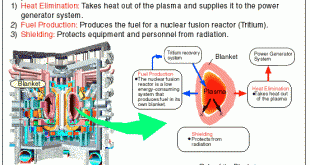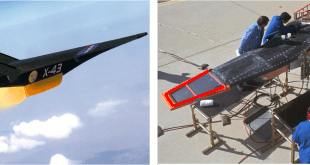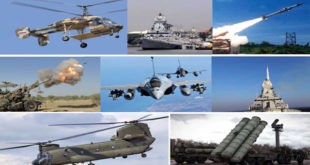After the Cold War, the US, NATO, and the world at large shifted focus to combating terrorism and capacity building in fragile states. As a result, the urgency to develop and field new systems to combat potential near-peer competitors eroded. Without this motivation, NATO and its allies – especially larger ones – continued to develop and acquire complex, bespoke platforms which assumed permissive operating domains, such as billion-dollar satellites, multi-billion-dollar aircraft carriers, and GPS-dependent ground and air assets. This approach yielded incrementally better capabilities, but no truly game-changing technologies. Concurrently, several of NATO’s largest allies drastically cut funding to their militaries and defense sectors, severely degrading previously robust capabilities. While this approach was sufficient for fighting technologically inferior non-state actors in the global war on terror, it has left NATO vulnerable in today’s renewed era of great power competition with Russia and China.
In the meantime, Russia and China have taken advantage of NATO’s pause in defense innovation to develop differentiated and comparatively more cost-effective area denial capabilities designed to mitigate NATO’s traditional strengths. Over the last decade, China has risen as a scientific and technological powerhouse, while Russia has more creatively and assertively pursued asymmetric advantages. Both the Kremlin and the Chinese Communist Party (CCP) have invested in innovation programs and EDTs that are beginning to change the character of modern warfare to their benefit.
Leveraging their highly centralized systems of government, Russia and China have facilitated cooperation between defense and commercial establishments to develop technologies that have already proven advantageous across military and civilian contexts.
China, and to a lesser extent, Russia have made major strides in artificial intelligence, military robotics, and autonomous systems, for example, which lower the cost and operational risk for Russia and China in a potential fight against NATO, whose greatest advantages are high-end, complex capabilities with high opportunity costs for their usage (e.g., manned aircraft carriers). This has significant implications for NATO as a whole, creating operational challenges and rapidly narrowing its traditional capability gap.
Beyond these technologies, there are several key areas where Russia and China individually have managed to gain parity or even exceed NATO capabilities or develop tools to mitigate NATO advantages. Most notably, this includes hypersonic and anti-satellite (ASAT) weapons or counter-space capabilities. These weapons pose a threat to commercial, civil, and defense assets ranging from telecommunications to the International Space Station to bespoke intelligence satellites.
Over the last few years, US and European officials have recognized the need to cooperate around EDTs to enhance collective defense and more effectively compete with Russia and China. The twenty-first-century race for technological supremacy is contested across multiple domains and moving at breakneck speed. Today’s innovators will own tomorrow’s future. As it stands, the North Atlantic Treaty Organization (NATO), the European Union (EU), and like-minded nations risk falling permanently behind. To win this race, the West must develop a common approach to integrating emerging and disruptive technologies (EDTs).
Perhaps most notable has been the creation of NATO’s Defense Innovation Accelerator for the North Atlantic (DIANA), whose chartered goals are to “harness new academic, commercial, and entrepreneurial start-up technology; test and develop it as potential defense capability; and connect it more quickly to military end-user operational requirements.
Recent priority lists and policy efforts, such as NATO’s DIANA and the Hub for EU Defence Innovation (HEDI) within the European Defence Agency (EDA), have rightly sought to address this and hold important potential to help the Alliance pursue EDTs to transformative ends. Still, insufficient coordination over time among nations and institutions has produced duplicative efforts, inefficient spending, and a concerning interoperability gap, most acutely between the US and European allies. Second, Euro-Atlantic allies diverge on key policy issues surrounding the defense application and adoption of EDTs, such as implementing common technology governance structures and managing supply-chain issues.
The Center for European Policy Analysis (CEPA) led a year-long study to produce a transatlantic strategic framework for competing in defense and dual-use technologies. The project aims to raise awareness, spark discussion, and provide a shared framework for cooperation on these issues among NATO, EU, and national government officials, as well as industry leaders.
The study makes three important contributions to the ongoing debate. First, it offers a clear, replicable methodology to identify and prioritize critical technologies as they emerge. Second, it sets forth nine core pillars to form the basis of a common transatlantic policy framework for defense tech issues. Third, it outlines short-term recommendations to implement the policy framework. Together, these elements comprise a compelling strategy for enhancing transatlantic cooperation in defense technologies.
Some of the highlights are
First, the research team assessed priority technologies through an organically assembled EDT Innovation Matrix, which ranks EDTs that the overall alliance should prioritize based on five key factors (time, need, cost, policy challenges, and impact). The assessment’s scope was confined to dual-use technologies, which are least understood and most contested within the Alliance, and yet extremely valuable and practical, given their diverse applications. More specifically, the assessment examined such technologies with near-term application timelines (i.e., currently deployed or will likely be deployed within five years), which are most relevant for immediate NATO and EU planning.
Based on these parameters, the research team identified and assessed five technologies as top priorities for the Alliance’s strategic edge: space-enabled capabilities, unmanned systems, hypersonics, edge computing, and cognitive influence capabilities. These were selected due to NATO’s relative need based on the current and foreseeable threat environment as well as Russian and Chinese capabilities in those areas, feasibility for realization, and the transformative potential of these technologies to impact the Alliance’s capabilities as a whole vis-a-vis China and Russia in future warfare.
Second, the research team developed a common strategic framework to address policy divergences by formulating nine key policy pillars to guide transatlantic defense tech cooperation.
Third, the researchers set out next steps for policymakers. This component of the project includes 50 short-term, concrete recommendations under each policy pillar to help nations and institutions implement the strategic framework. Finally, the research team developed a conceptual roadmap that includes one-year, three-year, and five-year key performance indicators (KPIs) to provide quantitative indicators to measure progress in implementing these recommendations as they evolve.
Pillar 1 recommends Forging a Common Assessment of the Threat Competition. NATO must adapt its doctrine, training, and warfighting techniques to create a common intelligence and operational picture of the strategic environment.
Pillar 3 calls for Improving the Regulatory Environment. Euro-Atlantic nations should make it more difficult for Russia and China to access Western commercial technologies through deeper coordination to tighten export controls, foreign investment screening, foreign research partnerships, etc. Europe and the US must work together to offset major defense tech supply chain vulnerabilities created by economic dependence, particularly in manufacturing and semiconductors, on China.
Euro-Atlantic governments should convince more venture capital (VC) firms to invest in defense startups, engaging them early in the conceptualization process of innovation initiatives. The EU should provide a platform for small, innovative companies to demonstrate their technologies to multiple countries at the same time to maximize resources.
Pillar 5 calls for continuously Scouting for Technology Solutions and Talent. NATO and the EU could create a shared database of relevant startups discovered through these scouting events ensuring individuals across the organizations involved can benefit from this knowledge.
NATO, the EU, and member nations must employ more people dedicated to extracting large amounts of information websites, also known as “scraping” technology that comes from the field, scanning the horizon for new opportunities, and sharing that information among allies. These individuals could be aggregated into a network of tech experts across transatlantic countries.
Pillar 6 calls for Increased Testing and Evaluation. Governments should provide more sustained, long-term, fungible resources to support prototyping, testing, procurement, and private sector engagement initiatives that facilitate industry-warfighter contact. Governments and institutions should undertake more tabletop exercises and wargames with emerging tech components. This should involve leveraging synthetic environments and giving nations more opportunities to test advanced technologies in large field exercises.
Pillar 7: Enhance Data-Sharing Among Allies. The transatlantic community must develop more resilient systems for data collection, sharing, and storage, as well as common standards for data formats, classifications, and transfers.
Pillar 8: Improve Interoperability and Standardization. Euro-Atlantic nations must take stock of lessons learned from Russia’s war in Ukraine regarding the need for rapid production and delivery of interoperable systems. Develop a NATO capability to integrate diverse non-NATO military units and equipment into coalition efforts.
Pillar 9: Connect and Better Align Existing Tech Efforts. NATO’s Defense Innovation Accelerator (DIANA) should embody a flexible approach aimed at creating multiple innovation ecosystems across countries for different fields of technologies. To bring together the EU, NATO, their member states, and industry players, the transatlantic community’s innovation efforts could be based on a “stone soup” model, in which each stakeholder offers what they are best suited to do. Nations could also explore a more explicit division of labor to create key technological capabilities.
Ultimately, it seeks to spur the development of a transatlantic defense technology strategy for the US and Europe, which will be critical for the West in light of rapid advances by Russia and China.
References and Resources also include:
 International Defense Security & Technology Your trusted Source for News, Research and Analysis
International Defense Security & Technology Your trusted Source for News, Research and Analysis


